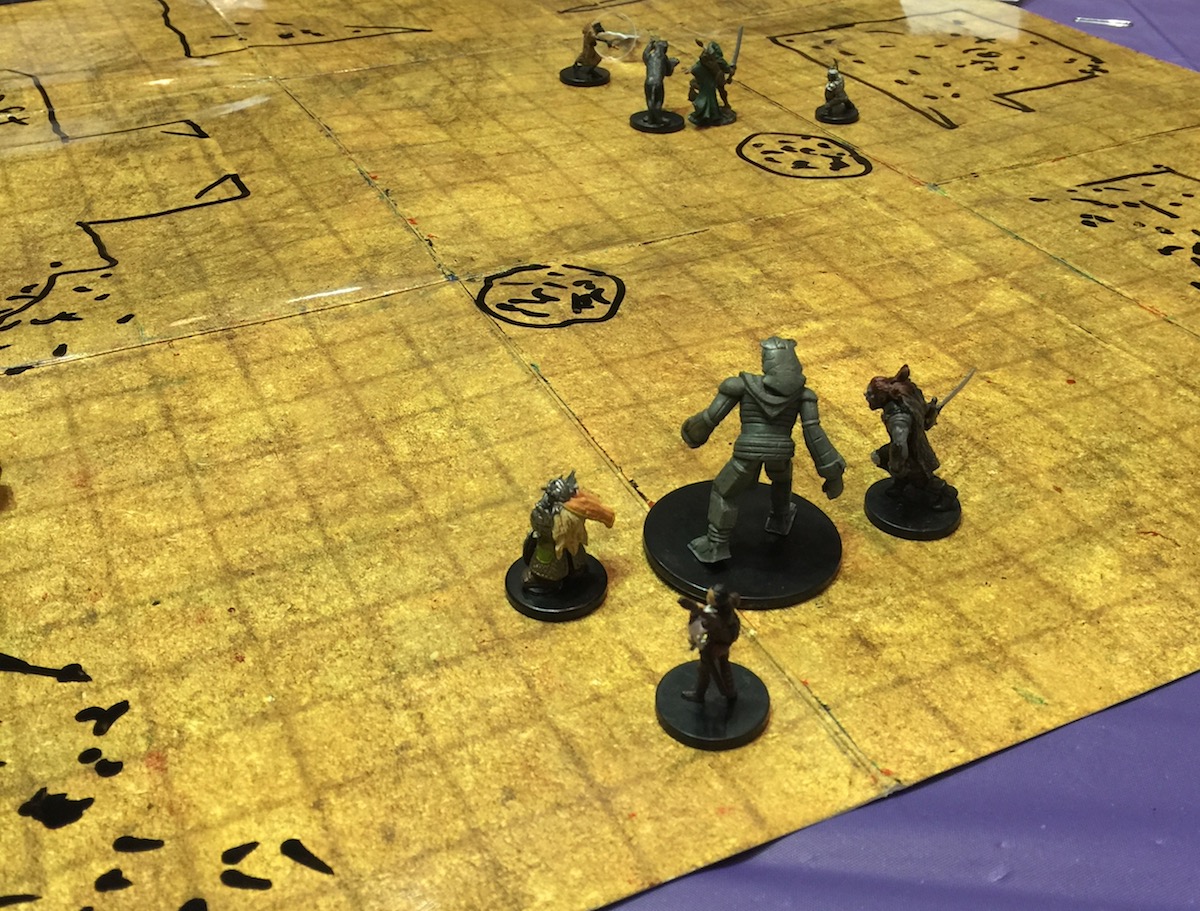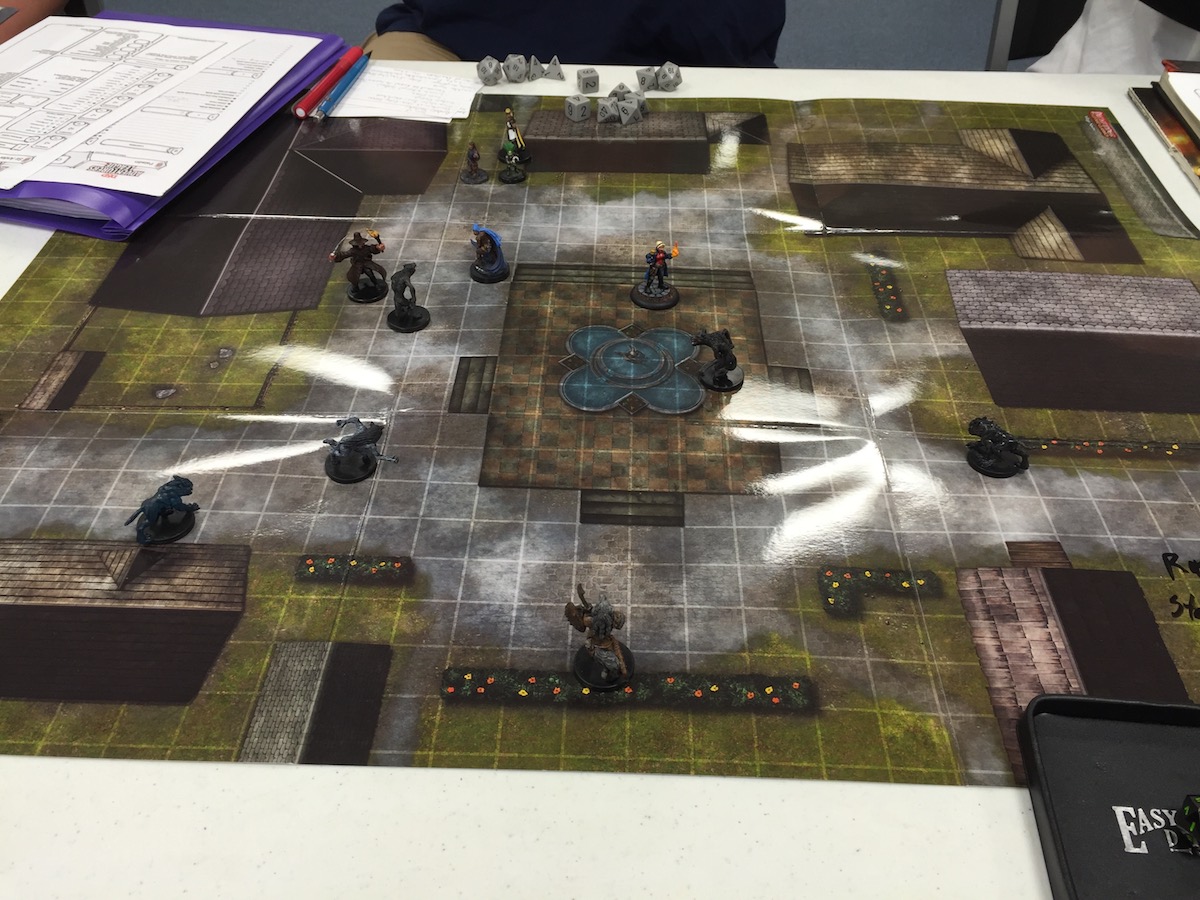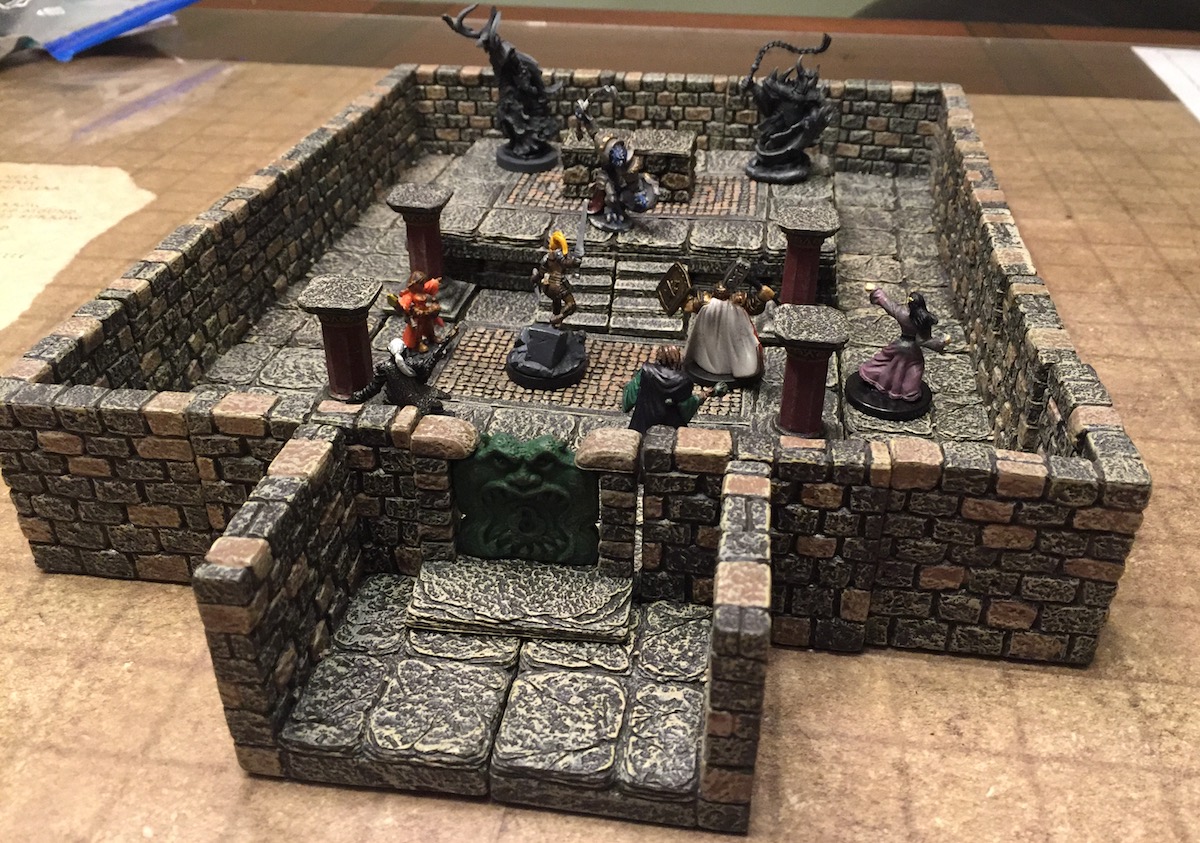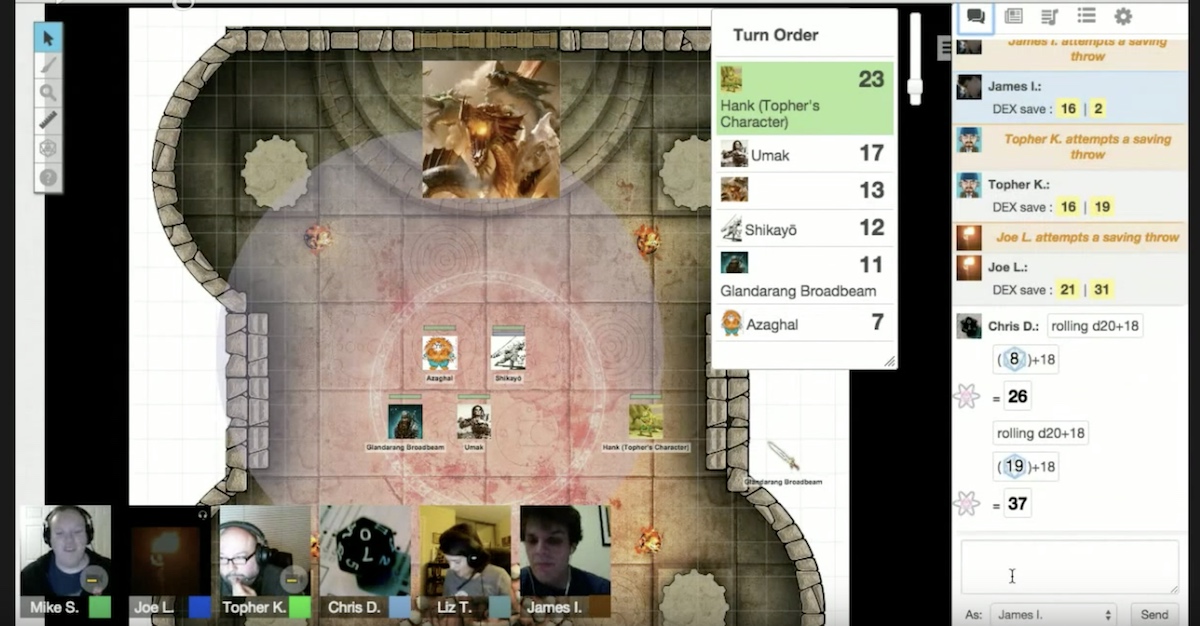New to Sly Flourish? Start Here or subscribe to the newsletter.
Battle Map Comparisons
by Mike on 11 September 2017
Note: This article has been updated from the original article posted 3 August 2009.
More than ever, we have numerous fantastic ways to run combat in our Dungeons & Dragons games. Over forty years, the tools we use to run combat have continually evolved in new and interesting ways.
Now, with the 5th edition of Dungeons & Dragons, we have hundreds of options for how we want to run combat ranging from purely verbal to huge complex systems of 3d models. 5e doesn't force us to use one system or another. Though roughly 60% of surveyed DMs use gridded combat, many groups are more than happy with abstract maps or the "theater of the mind". Within these broad ranges of tactical options to abstract options we have dozens of potential tools we can use.
In this article, we'll pick out some of the more popular options and discuss their advantages and disadvantages when using them to run our games.
Pathfinder Dry-Erase Flip Mat (Recommended)
The most economical option for quality maps, the Pathfinder Basic Flip Mat is my favorite multi-use battle map. This blank but textured mat is high quality, durable, flexible, light-weight, easy to pack, and cost-effective. It accepts wet or dry erase markers and each side has a texture of either white stone or sand. For a wider variety of textures, take a look at the Pathfinder Basic Terrain Multi-Pack which includes natural stone, worked stone, grass, and water. These maps are the best option for drawing your own maps, writing out monster hit points and physical descriptions, sketching weird symbols the characters encounter, or even drawing side-view maps. One need not accept the tyranny of the grid when using a flip mat like this.

This option, however, sacrifices immersion for flexibility. A hastily drawn map doesn't have the artistic detail of a pre-printed map or the immersion of 3d terrain. Still, for the flexibility and price, nothing beats a flip mat.
Don't forget to throw in a set of cheap dry-erase markers and a piece of scrap cloth to let you draw what you need and erase it when you're done.
Pathfinder Detailed Flip Mats
If you want more detail in your battle maps, the pre-printed Pathfinder Flip-Mats have a wide range of styles including extremely useful forest and town square maps. There are dozens of these maps available, all very durable and high quality.

Because they have fixed prints on them, their flexibility isn't as great as as a blank map but it will look much more realistic if your battle happens to take place in an area similar to this one. If you're running your own adventures, you can often use and re-use these printed maps to fit whatever encounter you wanted to run.
Wet Erase Maps
Designed by many different companies and running about $20, the wet-erase battle mat has been a staple in tabletop RPG games for years. They offer a flatter surface than fold-up dry-erase mats but require the use of wet-erase pens and must be rolled up to store or transport. Any non-wet-erase marker will permanently stain the mat and leaving wet erase marker on the map for too long will also stain it. Like the blank flip mats, these offer a great deal of flexibility but lack immersion. For some great tips on using a wet-erase map, read Chris Perkins's Map Fu. Personally, I much prefer the Pathfinder blank flip mat since, when folded, it fits nicer into a small folio than a roll-up tube and it doesn't matter what sort of marker you use on it.
Dungeon Tiles
For over six years, Wizards of the Coast has published punch-out cardboard Dungeon Tiles for dungeons, forests, and villages. Though I've tried using dungeon tiles for years, I never had a lot of luck with them. Because they're two-sided, it's hard to see all the potential tiles in front of you all at once. If you're looking for a particular tile, you have to flip them all over. Many sets lack large pieces so you end up messing around with a thousand small pieces instead. It takes significantly longer to set up a good battle map with tiles than just drawing it out or whipping out a flip mat that's close enough.
If you do use tiles, a sheet of black poster board and some poster putty can help you set up layouts ahead of time, they still take significant time to set up. That's time you could instead spend thinking about other important parts of your game. Dungeon tiles also don't have the same level of flexibility as a free-form blank poster map or the ease of use of a pre-printed poster map.
For these reasons, I don't recommend dungeon tiles. If you find yourself using them, consider my dungeon tile tips.
Dwarven Forge
Dwarven Forge dungeon terrain lets you build the most impressive battle maps you can imagine. They are also the most expensive. Made from high-quality resin or a high density plastic called "Dwarvenite", each piece of a Dwarven Forge dungeon is highly detailed and durable. You can build out huge, detailed, and beautiful multi-level battle arenas. There is nothing else like it.

This terrain comes with some drawbacks, however. First and foremost is the cost. Buying enough Dwarven Forge to build any reasonable battle map will cost at least a couple of hundred bucks. Large detailed dungeons can get into the thousands. They're also big and heavy, meaning you're not going to bring much of it with you to your local game shop or a convention.
Setup time is another big problem. Unlike poster maps, which you can whip out and place down in a few seconds, setting up a good Dwarven Forge battle area takes about fifteen to thirty minutes or more depending on the arena. Tearing it back down again also takes time. This inflexibility in setup means you're more likely to railroad your players into combat to ensure they hit the areas you built out. This makes it particularly hard to use Dwarven Forge in sandbox games.
Dwarven Forge accessories are the nicest dungeon accessories you can buy but their cost, setup time, size and weight mean I cannot recommend them over blank and pre-printed poster maps. For more details, read my Dwarven Forge Buyer's Guide.
Roll20
Over the past few years we have finally found some internet-based systems that let us play D&D with our friends all over the world. According to the 2016 DM Survey, 16% of DMs run their games using Roll20 a free web-based tool for running RPGs over the web. Roll20 is built around gridded combat and has hundreds of optional purchases to build your own detailed maps within their system. Recently, Wizards of the Coast started publishing their adventures in Roll20 including all of the maps in those adventures so you can your game on the very maps you find in the adventure. This is something you cannot do at a home game very easily.

If you find it hard to get people around your table, Roll20 is a fantastic way to get people together online and playing the game we love. Roll20 isn't the only tool for this. Fantasy Grounds also licenses official 5e D&D products and is preferred by those who like a full client instead of a web-based application.
Other Options
Numerous other solutions exist for battle maps. Hirst art molds for a do-it-yourself Dwarven Forge setup is a popular choice. A lot of alternative wet and dry erase map solutions also exist including Gaming Paper. Worldworks games produces a 3d cardboard system called Terraclips. Personally, I've never tried these solutions so I cannot offer an informed opinion of them.
Final Thoughts
There is a clear balance in price, immersion, setup time, and flexibility when it comes to poster maps. After years of trying out all of these products, I'm confident in the following choices. A Pathfinder blank flip mat offers a great balance of price, flexibility, portability, and setup time at the cost of detailed immersion and "wow" factor.
For their difficulty in setup, I don't recommend Dungeon Tiles. Though they are the most beautiful and immersive accessories you can buy, I cannot recommend Dwarven Forge due to their high cost, difficult storage, and time to set up.
We live in a fantastic time for this hobby of ours and we need look no further than the wide range of options for battle maps as an example. Whatever you choose, choose the option that brings the most fun to you and your group.
Related Articles
Subscribe to the Newsletter
Subscribe to the weekly Sly Flourish newsletter and receive a free adventure generator PDF!








